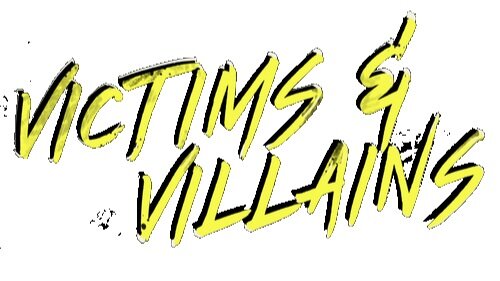Isolation and a sense of loneliness can come in many forms and can be caused by many different situations. Maybe it was an abusive relationship where someone was controlling and removed every connection to people you may have had. It could be extreme depression, leaving you wanting to be left alone and unable to reach out for help due to the hopelessness felt inside. Maybe it’s even various mental illnesses like Schizophrenia, where reality and illness blur so that you don’t know what is real and what isn’t.
Mental Illnesses and disorders come with their own complications. Visual and audio hallucinations are just a few of the symptoms. A lot of these can be passed down from parent to child and be genetic. Things like schizophrenia come with their own complications. Voices talking to you and seeing things that aren’t there are just a few of the things someone with a diagnosis may have to contend with. Which brings us to Sator. Strong ties to various mental illness along with addiction lay the groundwork for a story that may have an underlying paranormal theme and influence.
Nani has been talking to and seeing the Sator for as long as she can remember. Riddled with dementia in her later years, it could all be her failing memory. Her daughter and son also seem to be influenced by the entity of old as well. Is it real? Is it not? Pete may be on a wild goose chase as the main focus of this slow burn story about a backwoods deity influencing a lonely, obsessed, and damaged grandson. Is the Sator real? Have previous family events just been caused by mental illness? That is a question that underlines the entire story as a whole.
An interesting concept in the film is a lack of musical score. Previous slow burn horror tends to use the various musical accompaniments as a way to add tension and suspense. Sator doesn’t do that. That silence opens the door for a sense of isolation, as the main thing you hear is wind in the woods, the cracking of branches and twigs, and even the creaking of an old cabin in the woods. All lend themselves to building a dramatic sense of isolation and loneliness for Pete. Where screeching violins may get the heart pumping in expectance of a jump scare or attack, the silence and natural sounds of the forest gives you more of a sense of losing it and the mind possibly playing tricks. The downside to the lack of music is that it can make the film seem a little slow and drag on. There is nothing to help build towards the final events. There is nothing to lend any emotion or mindset to specific scenes other than the acting. While I think the tactic is great in some respects, it failed in others.
One of the other storytelling techniques is the use of black and white segments and scenes. Some are obvious scenes from video recordings of the grandmother for flashback purposes. Those aren’t an issue. The issue comes from a few other scenes. They do involve a certain character in the movie. However, that character also shows up in normal scenes as well. So what is the relevance of the those specific scenes? For me they leave more questions than answers, almost causing a detachment from the story instead of further progressing it, leaving you more with a sense of confusion than added detail to the story. Nani is the only really likeable character. The rest of the characters just seem miserable and unrelatable, leaving you feeling disconnected from them and their issues.
As a whole, Sator takes a few viewings to catch everything. It does have its high points with a couple “Nope” moments. However, certain character devices and plot points just cause it to drag with an overall experience that leaves you with more questions than answers. Whether intended or not, there is an excellent theme of mental illness and its effects as it’s passed down through genetics. Sator is not a film for everyone. Even as a fan of the slow burn films in general, I found it to be just ok. Nothing great or ground breaking but not horrible either. While the confusion of the movie acts as part of the plot, it also serves as a massive detractor to the overall events.
RORSHACH RATING:
Mental Health Moment: Mild Spoilers ahead. Sator does fall in the neighborhood of horror but touches on mental illness and genetics. With Nani having dementia, she also shows signs of a much more serious mental illness that is hinted at from some of the video flash backs. The thing with a lot of various mental illnesses is that they can be genetic and passed down from generation to generation. Again, it’s touched on in the film with a brief clip of the mother as well as some scenes with Pete. Hearing voices, hallucinations, and various other symptoms can be scary, especially If you don’t know what is going on. There is help out there in various forms.
If you or someone you know is reading this right now and struggling with suicide, depression, addiction, or self-harm - please reach out. Comment, message, or tweet at us. Go to victimsandvillains.net/hope for more resources. Call the suicide lifeline at 1-800-273-8255. Text "HELP" to 741-741. There is hope & you DO have so much value and worth!
Victims and Villains is written (and produced) by Josh "Captain Nostalgia" Burkey and others, and edited by Cam Smith. Music by Mallory Johnson and others. Sator is property of 1091 Pictures. We do not own nor claim any rights.
You can now support us on Patreon. Help us get mental health resources into schools and get exclusive content at the same time. Click here to join today!



